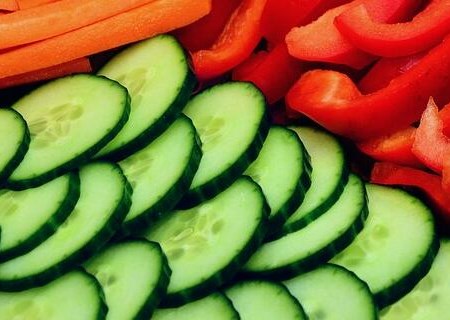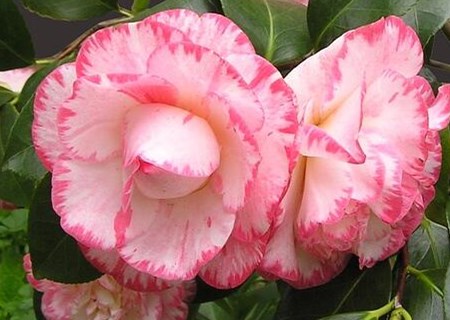How to grow Chinese herbal medicine wheat and blue cabbage (Wang Boulu)? When is the best time to harvest? What's the difference between the stars and the stars?
Brassica campestris is a kind of plant, also known as milky rice, king not to stay, wheat blue, cut gold, stay. It is an annual herb with activating blood circulation and dredging menstruation. It has the effect of eliminating carbuncle and can make wine and vinegar. So how to grow wheat and cabbage? When is the best time to harvest? What's the difference between the stars and the stars?

The difference between Brassica oleracea and Mantianxing
1. Medicinal value of Brassica napus L.
Speaking of broccoli, perhaps many people think that it is just a vegetable that can be fried, and it can indeed be used as a dish, but it is a very important traditional Chinese medicine, oh, women have irregular menstruation, and those who have given birth to babies without milk can take it, which is of great help to the treatment of many human diseases, especially for pregnant women, if they encounter dystocia during labor, they can eat it at this time. The effect is good, without any side effects, remember, pregnant mothers-to-be can not eat, will cause miscarriage.
two。 The medicinal value of all over the sky:
He is not only famous as something that can be used as flowers, but also has a certain medicinal value. His roots and stems can be used as medicine to control high fever, facilitate urination, resolve phlegm and cough, and so on. Although the taste is a little bitter, but it has a lot of benefits, with other traditional Chinese medicine ingredients, it can treat more diseases.
Main producing area
Liaoning, Beijing, Hebei, Shanxi, Shaanxi, Ningxia Autonomous region, Gansu, Qinghai, * * Autonomous region, Shandong, Jiangsu, Anhui, Zhejiang, Jiangxi, Henan, Hubei, Hunan, Guangxi Autonomous region, Chongqing, Xizang Autonomous region.
Planting technology
Wang does not leave the alias Wang Buliuxing and Brassica campestris, which is the dry seed of Caryophyllaceae. It has the functions of promoting blood circulation, relieving pain and promoting the birth of milk. Wang Buliu is wild in wasteland and roadside, resistant to drought and barren, and can also grow with wheat with strong adaptability. Wang does not leave time for sowing from mid-late September to early October after the stubble of autumn crops, and sowing in mid-April in the northern region, which can also be planted in spring and harvested in summer.
Sowing and sowing on the whole border surface, dig holes according to the row spacing of 25 cm × 20 cm, and the hole depth is 3 cm to 5 cm. Then, according to the seed amount of 1 kg per 667 square meters, the seeds were mixed with plant ash, human and animal manure, and made into seed ash. Each hole was evenly sprinkled with 1 pinch and covered with fine fertile soil, 1 cm thick. Strip sowing, according to the row spacing of 25cm 30 cm to open a shallow ditch, ditch depth of about 3 cm, and then spread seed ash evenly into the ditch, after sowing, cover fine soil 1.5 cm, about 2.5 kg per 667 square meters.
Management 1. Topdressing is generally carried out for 2 or 3 times. For the first time, 1500 kg of sparse human and animal feces or 5 kg of urea were applied every 667m2 after weeding. After ploughing and weeding in the spring of the second year, 2000 kg of human and animal manure water and 20 kg of calcium superphosphate were applied every 667m2, or 0.2% potassium dihydrogen phosphate liquid root topdressing twice, which was beneficial to increase production.
2. When the king does not leave the seedling with a height of 7cm or 10cm, the weeds should be ploughed and weeded for the first time. The soil should be loosened shallowly to avoid root damage. Weeds should be pulled out by hand. Combined with weeding by ploughing, seedling intercropping and seedling replenishment were carried out, and 5 strong seedlings were left in each hole. Strip sowing seedlings according to the plant spacing of 15 cm. If there are missing plants, use the strong seedlings from time to time to replenish the seedlings. The second intertillage weeding was carried out in combination with fixed seedlings in February and March of the second year.
The king of harvest and processing will not be harvested from April to May in the second year after autumn sowing. In general, when the king does not leave most of the seeds turn yellowish brown and a few have turned black, it is necessary to cut off the ground in time. After cutting back, put it in a ventilated and dry place and ripen for 5-7 days. When the seeds are all blackened, dry, thresh, remove impurities, and then dry them completely and then be sold as medicine. The yield per mu is about 150 kg. Large area sowing can be sowed by wheat seeder and harvested by wheat combine harvester, which is fast and clean.
Time: 2019-03-18 Click:
- Prev

What are the delicious cucumber seed planting methods? What is the effect and effect? Which people are not suitable for eating?
Cucumber, Cucurbitaceae annual trailing or climbing herbs. It is widely cultivated all over China, and is cultivated in greenhouses or plastic greenhouses in many areas; it is now widely cultivated in temperate and tropical regions. Do you know the planting methods of cucumber seeds? What is the effect and effect? It's not suitable for anyone to eat.
- Next

What are the planting methods of camellia seeds in the tea family? Can I keep it indoors? What's the use?
Camellia, this product is the flower of Camellia, picked, fresh or dried when it blossoms in summer and autumn. The main function is to clear the lung and calm the liver. Main nasal chancre; hypertension. Do you know the planting methods of camellia seeds? Can I keep it indoors? What's the use? Originated in the south of China
Related
- Fuxing push coffee new agricultural production and marketing class: lack of small-scale processing plants
- Jujube rice field leisure farm deep ploughing Yilan for five years to create a space for organic food and play
- Nongyu Farm-A trial of organic papaya for brave women with advanced technology
- Four points for attention in the prevention and control of diseases and insect pests of edible fungi
- How to add nutrient solution to Edible Fungi
- Is there any good way to control edible fungus mites?
- Open Inoculation Technology of Edible Fungi
- Is there any clever way to use fertilizer for edible fungus in winter?
- What agents are used to kill the pathogens of edible fungi in the mushroom shed?
- Rapid drying of Edible Fungi

